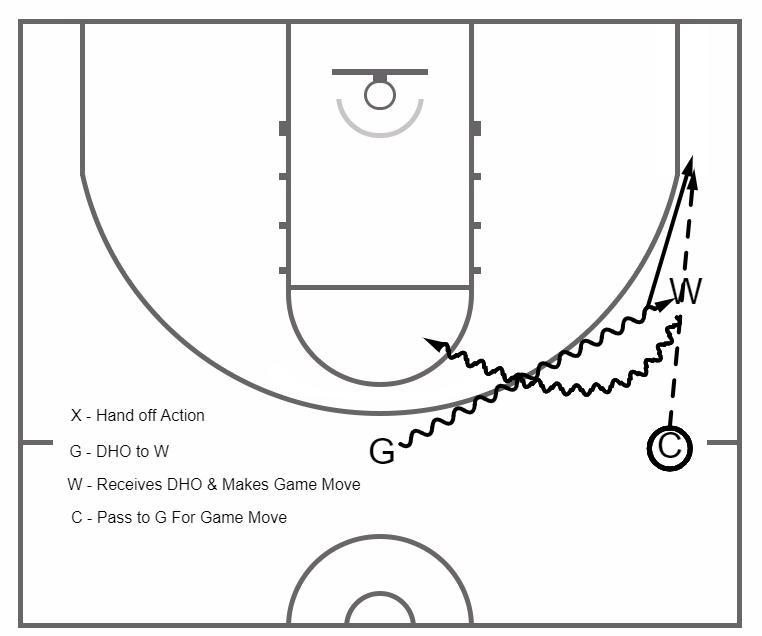
3 minute read
NABC Coach’s Clinic Running a 5-Option Offense Mike Donnelly, Head Coach, Florida Southern College
Running a 5-Option Offense
Advertisement
We run a motion based offense at Florida Southern . Initially, everything starts for us in transition . We want to run after every make, miss or steal . If we can’t get a high percentage shot in transition, we want to establish a flow and rhythm in the halfcourt with adequate spacing . In both transition and in the halfcourt, we want to have five (5) options readily available. The player with the ball must be an option, and the four receivers off the ball must be a visible threat as well .
Our philosophy is to not run plays, but rather to create space for our players so they can make plays . The best way to create space for the ball is to keep the help defense busy and active at all times with ball and player movement . We want every offensive player out on the floor to be an actual threat to score.
We teach our players with the ball to see everything . We want the ball handler to not only read and react to the defense, but to also see his receivers . The player with the ball must see all options, and receivers must be a visible target by showing their hands to the passer . The passer must see screeners, receivers and cutters .
We want our offensive players to run just to run, pass just to pass, and move just to move . We don’t want our players to dribble just to dribble, or to become stagnant off the ball . Receivers are non-threats when they gravitate to or stare at the ball, or if they are not in the passers vision . When a receiver is a non-visible threat, it is very easy for the defense to square up the ball . With running a 5 option offense, the objective is to force the defense to constantly move .
When a defense is forced to move, breakdowns occur, and gaps and space become available for the offense to exploit . An unpredictable offense is much more difficult to defend than a predictable offense, so not only do we rely heavily on our 5 option halfcourt motion principles, but also our halfcourt actions . Each action has a signal indicator . For example, our handoff action is the letter X signal, and a fake handoff is a fist signal. A rub action is a chest swipe signal. Our flare or back screen action is thumbs up and our drag wing ball screen action is a throat swipe . We break down our actions regularly in practice . We stress that these actions are executed at game speed to establish proper timing, and we also emphasize pass execution as well . Every detail matters .
Whatever action we run, we always want each player to be a viable scoring option and threat . So, if we run a handoff action, both the passer and receiver will look to score . Once an action is executed, we want our players to attack and to be creative . It is imperative that our players have the confidence to score in space. Without a player’s ability to score, an offense cannot survive and will ultimately fail .
The head coach at Florida Southern College since 2015, Mike Donnelly was the NABC District Coach of the Year in 2019-20 and a finalist for NABC Division II Coach of the Year. The Mocs finished the shortened season ranked fifth nationally in Division II with a 29-2 won-lost record and won both the Sunshine State Conference regular season and tournament titles. He has had two 1,000-point scorers in Jonathan Lawton and Brett Hanson with Hanson earning honors as the 2019-20 NABC Division II Player of the Year. Donnelly coached previously in Connecticut at Post College and Southern Connecticut State University, earning coach of the year honors in both conferences.
















